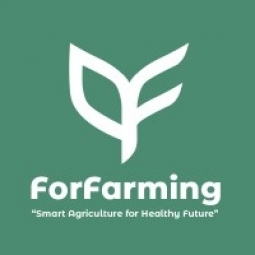技术
- 分析与建模 - 计算机视觉软件
- 基础设施即服务 (IaaS) - 公共云
适用行业
- 消费品
- 零售
适用功能
- 物流运输
- 采购
用例
- 临床图像分析
- 最后一英里交付
关于客户
Getir 是土耳其最大的在线杂货配送公司,在整个欧洲经历快速增长和扩张。他们以其在线杂货配送的创新方法而闻名,不断寻求新的方法来改进服务并在竞争中保持领先地位。尽管取得了成功,但他们面临着新兴竞争对手的挑战,并且需要不断创新以维持其市场地位。 Getir 关注的一个关键领域是超新鲜农产品类别,由于产品易腐烂的性质,该类别有可能产生大量额外订单。
挑战
Getir 是土耳其最大的在线杂货配送公司,2021 年上半年实现了超过 900% 的增长,并将业务扩展至整个欧洲。然而,这种迅速的成功吸引了许多竞争对手,包括新兴的在线送货公司和开始提供在线送货服务的主要零售连锁店。这场竞争迫使 Getir 不断创新并改进其价值主张,以维持其增长轨迹。一个重大挑战是鼓励顾客订购超新鲜农产品类别,因为许多人不愿意在没有亲自检查的情况下购买新鲜农产品。此外,在 Covid-19 大流行之后,食品安全成为公众关注的一个重要问题。为了解决这些问题,Getir 决定为其超新鲜农产品类别启动一个透明度项目,通过赢得消费者的信任来鼓励在线订购行为,并使自己在竞争中脱颖而出。
解决方案
Getir 实施了 Trusty by ForFarming,该平台允许农业生产者通过在包装上打印二维码向消费者展示其生产过程、分析报告、证书和设施信息。该解决方案通过接触消费者来强调产品的质量,并促进其可持续性、新鲜度和安全性。 Getir 和 ForFarming 启动了一个联合项目,让 Getir 的供应商参与其中。 ForFarming 为 Getir 设计了独特的二维码登陆页面,并定制了数据输入字段以匹配 Getir 的供应链。 Getir的供应商将其生产的每批次的所有生产流程分别记录在定制数据字段中,并将每批次各自的二维码打印到该批次产品的包装上。 Getir 的客户可以在订单到达后扫描这些二维码,查看每批产品的生产方式、地点和生产者。
运营影响
数量效益

Case Study missing?
Start adding your own!
Register with your work email and create a new case study profile for your business.
相关案例.
.png)
Case Study
Improving Vending Machine Profitability with the Internet of Things (IoT)
The vending industry is undergoing a sea change, taking advantage of new technologies to go beyond just delivering snacks to creating a new retail location. Intelligent vending machines can be found in many public locations as well as company facilities, selling different types of goods and services, including even computer accessories, gold bars, tickets, and office supplies. With increasing sophistication, they may also provide time- and location-based data pertaining to sales, inventory, and customer preferences. But at the end of the day, vending machine operators know greater profitability is driven by higher sales and lower operating costs.

Case Study
Improving Production Line Efficiency with Ethernet Micro RTU Controller
Moxa was asked to provide a connectivity solution for one of the world's leading cosmetics companies. This multinational corporation, with retail presence in 130 countries, 23 global braches, and over 66,000 employees, sought to improve the efficiency of their production process by migrating from manual monitoring to an automatic productivity monitoring system. The production line was being monitored by ABB Real-TPI, a factory information system that offers data collection and analysis to improve plant efficiency. Due to software limitations, the customer needed an OPC server and a corresponding I/O solution to collect data from additional sensor devices for the Real-TPI system. The goal is to enable the factory information system to more thoroughly collect data from every corner of the production line. This will improve its ability to measure Overall Equipment Effectiveness (OEE) and translate into increased production efficiencies. System Requirements • Instant status updates while still consuming minimal bandwidth to relieve strain on limited factory networks • Interoperable with ABB Real-TPI • Small form factor appropriate for deployment where space is scarce • Remote software management and configuration to simplify operations

Case Study
Digital Retail Security Solutions
Sennco wanted to help its retail customers increase sales and profits by developing an innovative alarm system as opposed to conventional connected alarms that are permanently tethered to display products. These traditional security systems were cumbersome and intrusive to the customer shopping experience. Additionally, they provided no useful data or analytics.

Case Study
How Sirqul’s IoT Platform is Crafting Carrefour’s New In-Store Experiences
Carrefour Taiwan’s goal is to be completely digital by end of 2018. Out-dated manual methods for analysis and assumptions limited Carrefour’s ability to change the customer experience and were void of real-time decision-making capabilities. Rather than relying solely on sales data, assumptions, and disparate systems, Carrefour Taiwan’s CEO led an initiative to find a connected IoT solution that could give the team the ability to make real-time changes and more informed decisions. Prior to implementing, Carrefour struggled to address their conversion rates and did not have the proper insights into the customer decision-making process nor how to make an immediate impact without losing customer confidence.









